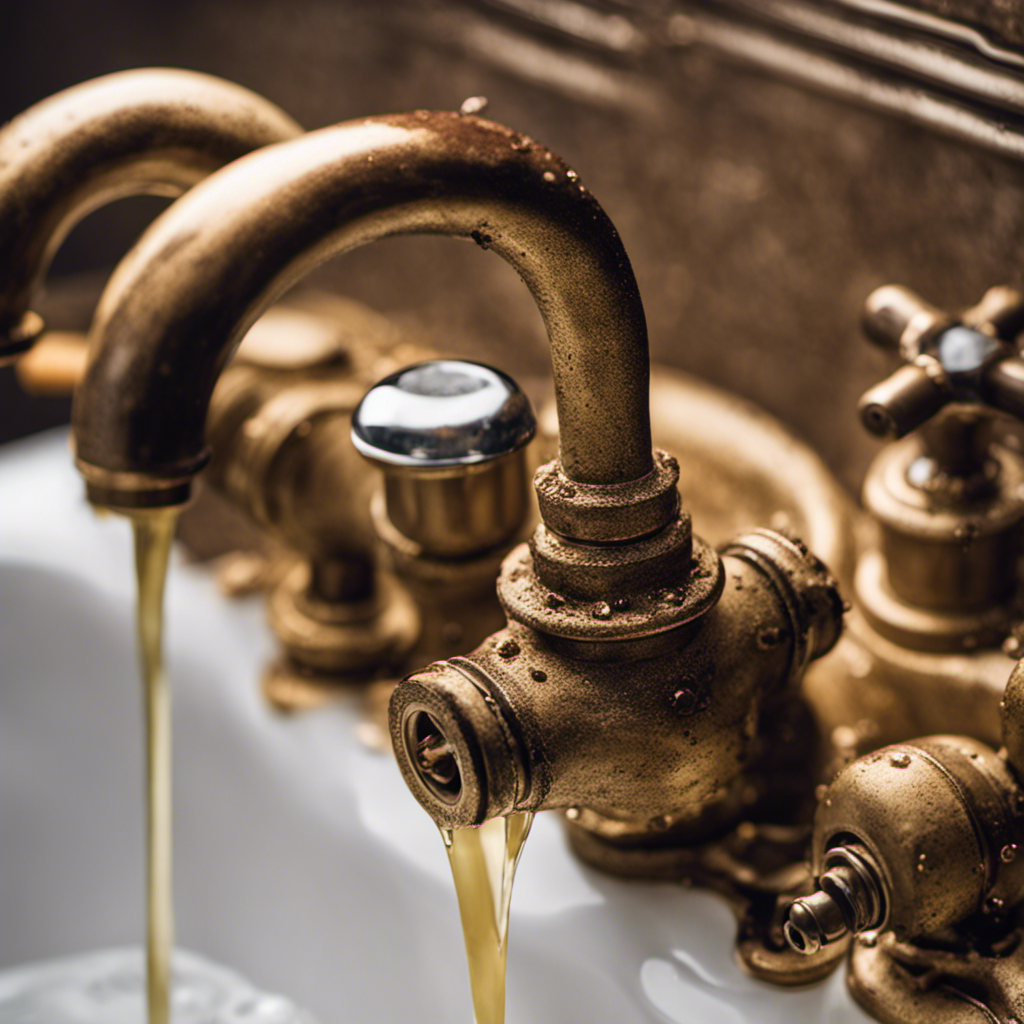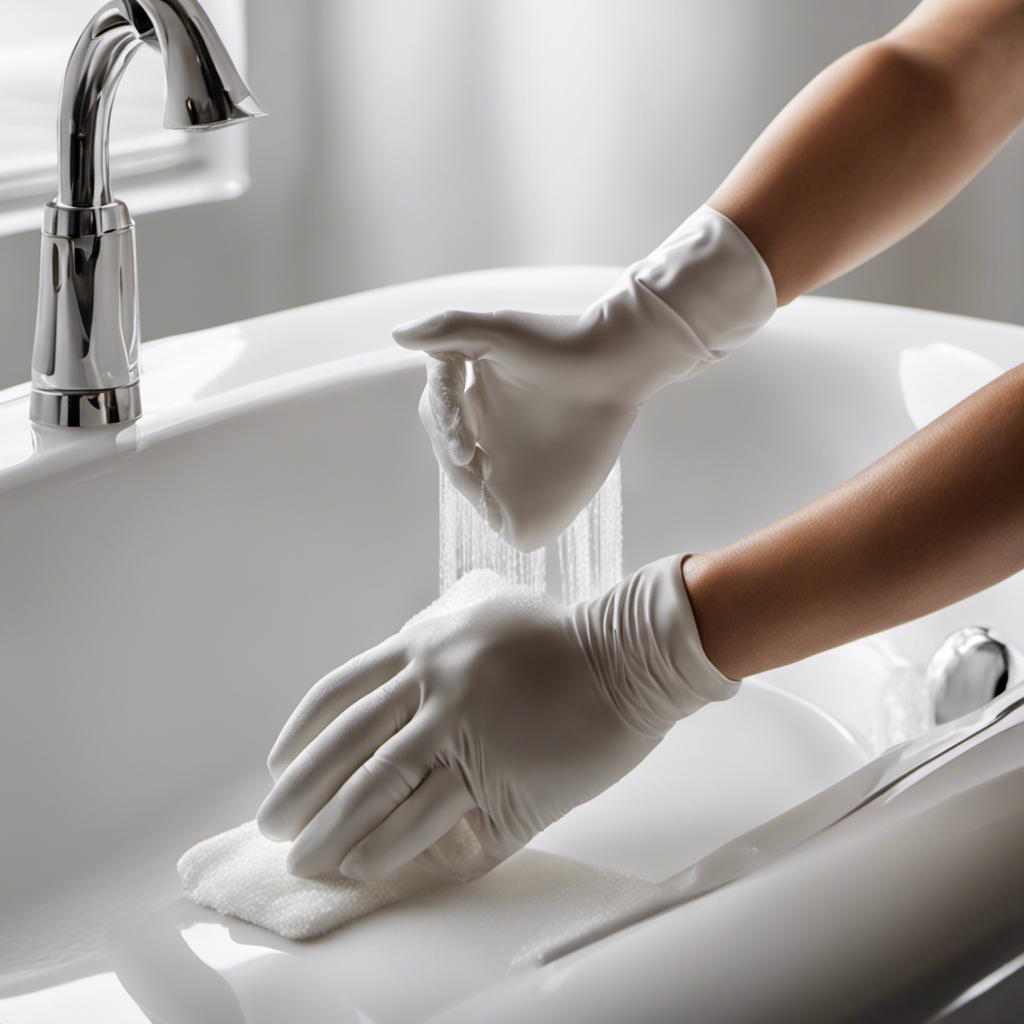I’ve been there before – lying in bed, trying to fall asleep, but all I can hear is the incessant drip, drip, drip of a bathtub faucet. It’s enough to drive anyone crazy! But fear not, because I’m here to help you fix that frustrating problem once and for all.
In this article, I will guide you through the step-by-step process of repairing a dripping bathtub faucet. With a little know-how and the right tools, you’ll have your peaceful nights back in no time.
Key Takeaways
- A dripping bathtub faucet can be caused by a leaky cartridge or a faulty valve seat.
- Identifying and fixing leaks is important for water conservation and reducing water wastage.
- The tools needed for fixing a dripping bathtub faucet include an adjustable wrench, Phillips head screwdriver, pliers, and plumber’s tape.
- The step-by-step process for repairing a dripping faucet includes turning off the water supply, disassembling the faucet, inspecting and replacing faulty components, and reassembling the faucet.
Understanding the Problem: Identifying the Cause of the Dripping Faucet
To fix the dripping faucet, you’ll need to understand the problem by identifying the cause.
One common cause of a dripping bathtub faucet is a leaky cartridge. This is often due to worn-out rubber seals or O-rings inside the cartridge.
Another possible cause is a faulty valve seat, which can be damaged or worn out over time.
Identifying leaks is crucial not only for fixing the faucet but also for water conservation. A dripping faucet can waste a significant amount of water, contributing to unnecessary water consumption and higher utility bills. By promptly fixing the issue, we can reduce water wastage and promote sustainability.
Now that we understand the cause of the problem, let’s move on to the next step: gathering the tools necessary to fix the dripping bathtub faucet.
Gathering the Tools: Essential Equipment for Fixing a Dripping Bathtub Faucet
Start by gathering the necessary tools for repairing a leaky bathroom tap. When it comes to bathtub faucet replacement, having the right equipment is essential.
First, grab an adjustable wrench to loosen and tighten the faucet’s nuts and bolts.
Next, you’ll need a screwdriver, preferably a Phillips head, to remove any screws holding the faucet in place.
Additionally, have a pair of pliers handy to grip and turn small components.
It’s also crucial to have a plumber’s tape to create a watertight seal when reassembling the faucet.
If you encounter any complications or lack confidence in your DIY skills, it’s always wise to consider professional plumbing services. They have the expertise and tools to tackle any plumbing issue efficiently and ensure a long-lasting solution.
Step-by-Step Guide: Repairing the Dripping Faucet in Your Bathtub
Once you have gathered all the necessary tools, it’s time to begin repairing your leaking bathtub tap. Here is a step-by-step guide on how to fix the dripping faucet in your bathtub:
-
Turn off the water supply: Locate the shut-off valves and close them to prevent water flow.
-
Disassemble the faucet: Use a screwdriver to remove the handle and any decorative caps, exposing the cartridge or valve.
- Note: Different faucet types may require different disassembly techniques.
- If you’re unsure, consult the manufacturer’s instructions or seek professional help.
-
Inspect the cartridge or valve: Look for any signs of damage or wear, such as cracks or mineral build-up.
-
Replace the faulty component: If necessary, purchase a replacement cartridge or valve from a hardware store.
- Make sure to choose the correct size and type for your faucet model.
-
Reassemble the faucet: Put the new cartridge or valve in place and reattach the handle and decorative caps.
-
Test for leaks: Turn on the water supply and check if the faucet is still leaking.
- If the problem persists, you may need to repeat the process or consider alternative solutions.
Troubleshooting Tips: Common Issues and Solutions for a Dripping Bathtub Faucet
If you’re experiencing a dripping bathtub tap, there are some common issues and solutions you can try to troubleshoot the problem. The table below outlines the possible causes and corresponding troubleshooting techniques for a dripping bathtub faucet.
| Cause | Troubleshooting Technique |
|---|---|
| Loose handle | Tighten the handle screws |
| Worn-out washer | Replace the washer |
| Corroded valve seat | Clean or replace the valve seat |
| Faulty cartridge | Replace the cartridge |
| High water pressure | Install a pressure-reducing valve |
Maintenance and Prevention: How to Keep Your Bathtub Faucet Drip-Free for the Long Term
To keep your bathtub faucet drip-free for the long term, you should regularly maintain and prevent any potential issues. Regular maintenance not only helps to ensure the proper functioning of your faucet but also prevents costly repairs down the line. Here are some tips to help you maintain your bathtub faucet:
- Inspect and clean the aerator regularly to remove any debris or mineral deposits that could affect water flow.
- Check the washers and O-rings for any signs of wear and tear, and replace them if necessary.
- Lubricate the moving parts of the faucet to prevent friction and ensure smooth operation.
Choosing the right replacement parts is crucial for maintaining a drip-free faucet. Make sure to select parts that are compatible with your specific faucet model and meet the necessary quality standards. Regular maintenance and using the right replacement parts can extend the lifespan of your faucet and save you from the inconvenience of a dripping faucet.
Conclusion
In conclusion, fixing a dripping bathtub faucet may seem like a daunting task, but it can be easily resolved with the right tools and a step-by-step guide. Just like a skilled surgeon delicately mends a broken heart, tackling the issue requires precision and care.
By identifying the cause, gathering the necessary tools, and following the repair process, you can restore peace and tranquility to your bathroom.
Remember to regularly maintain your faucet to prevent future leaks and enjoy a drip-free bathing experience for years to come.










